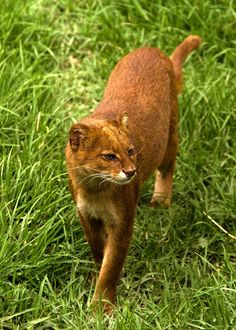Gulf Coast Jaguarundi

Source: http://ingrid.zcubes.com/zcommunity/v.aspx?mid=346686&title=gulf-coast-jaguarundi Gulf Coast Jaguarundi Recovery Plan by Jordan Opet Listing Date and Type of Listing Title: Gulf Coast Jaguarundi Recovery Plan (Puma yagouaroundi cacomitli) Plan Date: 12/20/2013 Listing Status: Endangered (U.S), Threatened (Mexico) Listing Date: 06/14/1976 Location: Southern Texas and Eastern Mexico Plan Status: Final Description and Ecology of the Gulf Coast Jaguarundi Chances are the majority of U.S citizens have never heard of the Gulf Coast jaguarundi ( Puma yagouaroundi cacomitli ). This can be contributed to the rarity of this subspecies. There have been very few sightings of the Gulf Coast jaguarundi over the years. Even if someone happened to come upon the path of a jaguarundi, they could easily mistake it for a slightly over-sized house cat. They also share a similar look to wea...


